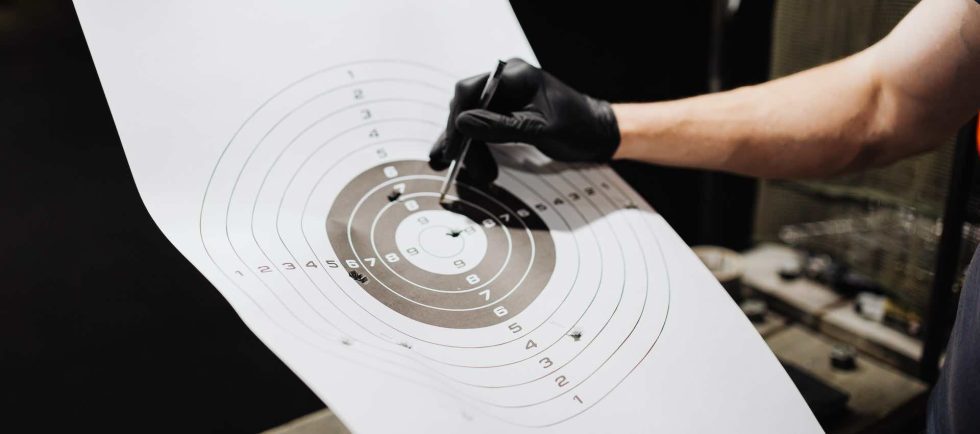Understanding and Improving Air Rifle Accuracy
Air rifle accuracy is a topic that often comes up among enthusiasts and beginners alike. It’s a multifaceted issue that can be influenced by various factors, from the rifle’s design to the shooter’s skill and technique. Here’s a comprehensive guide on why an air rifle may not be perfectly accurate and how to improve it.
What is Air Rifle Accuracy?
Air rifle accuracy refers to the ability of the air rifle to shoot ammo and hit the intended target. When you aim at a target, you expect the pellet to land where you want it to. However, sometimes the pellet hits many inches above the mark, sometimes below, to the right, and sometimes to the left. When that happens, the blame can be placed on the air rifle, the shooter, or even natural forces.
Factors Affecting Air Rifle Accuracy
The Barrel
The design of the barrel, particularly the bore, can affect the movement of the pellet within the barrel. Rifled barrels with spiral grooves cause the projectile to spin along its longitudinal axis as it flies out of the muzzle, making the pellet fly a long distance in a more straight flight path. On the other hand, smoothbore barrels don’t impart this spin, causing the pellet to lose energy after a short distance.
Imperfections in the barrel, such as burrs and other tiny flaws, especially in brand-new rifles, can also affect the ballistic flight of the pellet. Additionally, if the barrel is not perfectly aligned with the scope or firmly fixed to the stock, it can affect the accuracy.
Pellets
The brand, shape, and weight of pellets can significantly affect an air rifle’s accuracy. It’s essential to test different pellets until you find the brand and type that your air rifle prefers. Sample Pellets.
The Powerplant
The type of power can also affect accuracy. Springers produce more recoil than PCPs and gas piston airguns. Recoil generates vibrations that can destabilise the hold of the airgun, affecting accuracy if not adequately managed. Discussed in detail types of air rifle and how they work.
The Trigger
The trigger plays a crucial role in accuracy. A well-made trigger that is not too heavy or too light and provides a predictable pull can significantly enhance accuracy.

Tips to Improve Air Rifle Accuracy
- Hold Your Air Rifle Level: Use a spirit level to ensure that your air rifle is as level as possible.
- Adjust Your Trigger: If your trigger is adjustable, tune it to a crisp and predictable position.
- Use Quality Scope Mounts: Good quality scope mounts can help perfectly align the scope with the barrel.
- Maintain Adequate Eye Relief: Don’t place your eye near or far from the rear lens.
- Stabilise Your Position: Make yourself as stable as possible before shooting. This could mean kneeling or leaning against a tree for more stability.
- Master Your Hold: Learn how to hold your air rifle and stick to it.
- Use the Right Pellets: Try out different pellets until you find the brand and type that your air rifle likes.
- Tighten Loose Screws: Ensure that all screws on the stock are tight to maintain the alignment of the barrel.
- Clean Your Barrel: If inaccuracy problems persist, consider cleaning your barrel.
- Master Your Trigger Control: Pull the trigger steadily rather than snatching it vigorously.
- Practice with your air rifle until you consistently achieve a 1-inch shot grouping at your typical target distance.
Remember, improving air rifle accuracy is a process that requires patience, practice, and a good understanding of your equipment. By addressing the factors that affect the accuracy and taking steps to improve your technique, you can significantly enhance the performance of your air rifle. If you are practicing in your backyard do consider the noise pollution for your neighbours.
Eliminating Human Error
Human error is a significant factor in air rifle accuracy. Here are some tips to help eliminate human error:
- Consistency is Key: Keep your shooting routine consistent. This includes your stance, grip, and even your breathing pattern. The more consistent you are, the more accurate your shots will be.
- Focus on Breathing: Your breathing can significantly affect your aim. Try to fire during the natural pause between breaths for the steadiest aim.
- Stay Calm: It’s important to stay calm and focused while shooting. Stress and anxiety can throw off your aim.
- Practice Makes Perfect: The more you practice, the more familiar you’ll become with your air rifle and the better your accuracy will be.
- Take Your Time: Don’t rush your shots. Take your time to aim correctly and fire when you’re ready.
Does My Air Rifle Have A Defect Effecting Accuracy
Bench shooting with a rifle rest is a popular method for testing the accuracy of an air rifle and removes more possibilities of human error. Here’s a step-by-step guide on how to do it: even using shooting bag rests will help improve your accuracy.
- Set Up Your Bench and Rest: Find a stable, flat surface for your bench. Place your rifle rest on the bench. Some rests are adjustable, allowing you to make fine adjustments to your aim. The rest should be designed to hold your rifle steady while you aim and fire.
- Position Your Target: Set up a target at a reasonable distance. Ensure the target is at a height that aligns with your rifle when it’s on the rest. For air rifles, a distance of 10 to 50 yards is typical.
- Load Your Rifle: Load your air rifle with the pellet you want to test for accuracy.
- Position Your Rifle: Place your rifle on the rest. The rest should support the rifle’s forend and buttstock. Make sure the rifle is level and aimed directly at the target.
- Aim and Fire: Look through your scope or sights and aim at the target. When you’re ready, slowly squeeze the trigger to fire a shot. Try to keep the rifle as still as possible when you fire.
- Repeat: Fire a series of shots (typically five to ten) without adjusting your aim. This will give you a “group” of shots on the target.
- Analyse Your Group: Examine the target After firing your shots. The “group” is the pattern that your shots have made on the target. Your rifle is accurate if the group is small (all the shots are close together). Your rifle may be less accurate if the group is large (the shots are spread out).
- Make Adjustments: If your group is off-centre or larger than you’d like, you can make adjustments to your rifle, your aim, or your technique. Adjust the scope, try a different type of pellet, or work on steadying your hold.
- Repeat the Process: After making adjustments, repeat the process of firing a group of shots and analysing the results. This will help you determine if your adjustments have improved the rifle’s accuracy.
Warning If Accuracy is Inconsistent
If after testing all the different processes above and you do not achieve a level of consistency in your groupings then your air rifle may have a mechanical defect. We would recommend that you take it to a recommended air rifle tuner for further checks.
Frequently Asked Questions (FAQs) on the topic of air rifle accuracy:
- Why is my air rifle not accurate? This could be due to the quality of the pellets you’re using, the condition of the barrel, the alignment of the scope, or even your shooting technique. There could be several reasons why your air rifle needs to be more precise.
- How can I improve the accuracy of my air rifle? Improving air rifle accuracy can be achieved by ensuring your rifle is level when shooting, adjusting your trigger, using quality scope mounts, maintaining adequate eye relief, stabilising your position, mastering your hold, using the suitable pellets, tightening any loose screws, cleaning your barrel, learning your trigger control, and practising regularly.
- Does the type of pellet affect the accuracy of an air rifle? Yes, the brand, shape, and weight of pellets can significantly affect the accuracy of an air rifle. Testing different pellets to find the best type with your specific air rifle is essential.
- How does the barrel affect the accuracy of an air rifle? The design of the barrel, particularly the bore, can affect the movement of the pellet within the barrel. Imperfections in the barrel, such as burrs and other tiny flaws, can also affect the ballistic flight of the pellet. Additionally, if the barrel is not perfectly aligned with the scope or firmly fixed to the stock, it can affect accuracy.
- Does the powerplant type affect the accuracy of an air rifle? Yes, the kind of powerplant can affect accuracy. Springers produce more recoil than PCPs and gas piston airguns. Recoil generates vibrations that can destabilise the hold of the airgun, affecting accuracy if not adequately managed.
- How can I eliminate human error when shooting an air rifle? Human error can be minimised by maintaining a consistent shooting routine, focusing on breathing, staying calm and focused, practising regularly, and taking time to aim properly before firing. Revert to bench and rest testing as above.
- Why is my air rifle shooting to the left/right? This could be due to a misaligned scope, an issue with the barrel, or even how you’re holding the rifle. It’s also possible that wind or other environmental factors are affecting the pellet’s trajectory.
- Does cleaning the barrel improve accuracy? Yes, cleaning the barrel can help improve accuracy significantly if any obstructions or build-up could affect the pellet’s flight. However, it’s crucial to cleanse sparingly as this can wear down the rifling in the barrel.
- How important is the trigger in air rifle accuracy? The trigger plays a crucial role in accuracy. A well-made trigger that is not too heavy or too light and provides a predictable pull can significantly enhance accuracy.
- Why does my air rifle lose accuracy over distance? All projectiles, including air rifle pellets, are subject to the forces of gravity and air resistance, which can cause them to drop and slow down over a distance. Additionally, the spin imparted by the rifling in the barrel can only stabilise the pellet for a certain distance. After that, the projectile may wobble or tumble, reducing accuracy.


